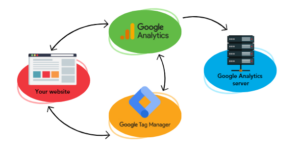
Unleash the true value of your data with our center of excellence, Proove Intelligence.

It’s no secret that customer journeys have changed. Gone are the days of a simple, linear route to conversion. Now, user journeys consist of multiple crisscrossing touchpoints that require careful tracking and analysis. In response to this, media mix modeling (MMM) has become an increasingly popular way to understand the correlations between ad spend and conversions.
However, MMM depends on access to a large amount of first-party data, and most marketers would agree that this data is becoming increasingly difficult to gather in the face of evolving privacy laws. Ad blockers and privacy-focused developments such as Apple’s iOS 14 tracker blocker, for instance, are continuing to hinder marketers from seeing the whole picture when it comes to customer journeys. Across markets, cookie usage is dropping, with the EU seeing opt-out rates of up to 70%. Meanwhile, in a 2021 Statista survey, only 32% of American adults indicated they always accepted cookies. However, these trends are not the only cause for alarm for those relying on cookies to inform their marketing strategy.
For years, cookies have been the go-to method for tracking user behavior online, but now the party is over. Soon, marketers will need to rely on new strategies to gather this essential data. Google has announced that support for third-party cookies will be phased out in its Chrome browser as soon as 2024, and we expect other browsers to follow suit.
Cookies are easy to use, but they come with a significant downside: they sacrifice control for ease of use. Multinational companies may struggle with this lack of control because, in the EU, information like IP addresses is considered personally identifiable information (PII). Data loss is a serious and growing problem for marketers, and with fewer insights and more challenges when it comes to tracking the customer journey, it’s essential to take steps now to futureproof your data-collection strategies.
Enter server-side tracking. Server-side tracking can help marketers remove their dependency on cookies. Interested? We’re here to help you understand the pros and cons of this process to see if it might help you reach your business goals.
Server-side tracking is a newer and more technical method for ensuring you are capturing the largest amount of data possible and correctly mapping customer journeys. To fully understand what makes server-side tracking such an intriguing option, it’s worth considering how it stacks up to more traditional methods of tracking first.
Imagine you are using Google Analytics to track button clicks on your website. Typically, once you implement Google Tag Manager (GTM) on your site, GTM will activate the Google Analytics tag. This snippet then attempts to send a record of the event you requested and some extra info about the device to the Google Analytics site. However, ad blockers recognize and reject requests like this to send information to a third-party analytics tool, leading to the data loss marketers try to avoid.

With server-side tracking, utilizing a cloud server adds an extra step to the data-collection process. In the EU, users will still need to consent, but ad- and app-tracking blockers will be circumvented. Imagine the same scenario of tracking a button click with Google Analytics—except now, instead of sending the record of the button click to a third-party site, that data is first sent to your own server. Since the server is mapped to your subdomain and recognized as a first-party tracking tool, ad blockers can’t stop it. Once the data reaches your server, the request is processed and reconfigured as necessary. This process helps guarantee you will receive the data you want with no extra information. At that point, the data is passed on to Google Analytics or your in-house analytic tools as normal.

Subscribe to our monthly newsletter.
The benefits of using server-side tracking are numerous, but we think these points are some of the most impactful.
So, what’s the downside? Renting servers costs money, and the more data that is processed, the more money companies may have to spend. Even so, this cost should be well worth it for small- to medium-sized businesses. While prices vary, the costs involved in hosting the server are low enough for most businesses if using self-service platforms such as Google Cloud.
Another potential concern is that, since server-side tracking is a newer solution, some advertising platforms may not yet support it—although most major ones, like Facebook and Google, already do.
While it’s possible to integrate server-side tracking using free tools such as Google Tag Manager, a fair amount of technical know-how is still required. Server setup, maintenance, and knowledge of configuring GTM are all necessary to ensure this new process works optimally. If you don’t have the technical expertise, you may require assistance from either an in-house team or an agency like DAC.
Over the last 10 years, tracking online behavior via cookies has been the norm, but those days are rapidly coming to an end. With the analytics landscape changing so quickly, all businesses will soon need to reassess how they gather their data and whether their strategies align with new privacy expectations. Server-side tracking offers an exciting and innovative alternative to marketers who are currently experiencing roadblocks with more traditional methods of tracking consumers.
Want to chat with our experts about making the transition to server-side tracking? With our expertise in this area, we can help you stay ahead of the curve and ensure that your business is ready for the future.
Unleash the true value of your data with our center of excellence, Proove Intelligence.
Unleash the true value of your data with our center of excellence, Proove Intelligence.
Unleash the true value of your data with our center of excellence, Proove Intelligence.
Subscribe to our monthly newsletter.